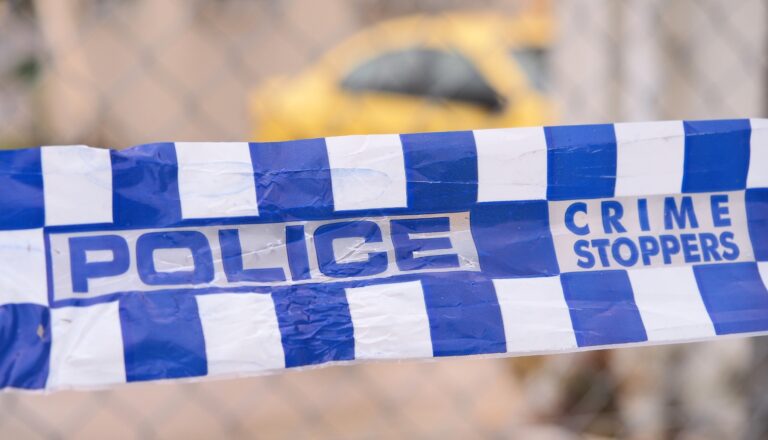
How the Golden Mile Lost Its Bling
In the lead up to Mardi Gras, Sydney topped the list of the world’s most gay friendly cities. But does Darlinghurst deserve its ranking as one of the best gay destinations in the world? In August of last year, the Daily Telegraph officially declared Oxford Street straight, with heterosexual venues now outnumbering gay bars on the strip by three to one. Sydney’s pink precinct has been on the road to ruin for a decade. Oxford Street’s slump started in 2000 — during the dotcom crash and the post Olympics doldrums. That year the Beresford, the Beauchamp and the Albury Hotel were all sold off to property developers who had little interest in maintaining a gay ghetto. In 2001 Mardi Gras chose to overlook the market downturn – promising to deliver a bigger, better and bolder parade, hoping to lure even more corporate sponsors to fund their lavish plans. In 2002 a bankrupt Mardi Gras organisation was put into administration and gay Oxford Street faced a crisis in confidence. That same year construction began on a massive Westfield’s Shopping Centre at the other end of Oxford Street. When the Bondi Junction mega-mall opened in 2004, small businesses up and down Oxford Street were mauled to death, leading to an increase in vacancies on the once thriving high street. In 2004, the City of Sydney took control of Darlinghurst and upgrade work on Oxford Street started in 2005. If you lived in Sydney at the time, you would have avoided the place. And everybody did, forcing the closure of many small local retailers, who struggle during the best of times. Today much of the Sydney’s famous gay high street either sits empty or is up for sale.
Since it was first opened to traffic in the early 1800s, Oxford Street has sat at the crossroads. Just last month, the City of Sydney exhibited its latest $14 million plan to redevelop the heart of the strip. The City owns twenty percent of the properties along lower Oxford Street from Whitlam Square to Taylor Square and is the single largest landowner in the gay village. One hundred years ago, in late 1909 the City resumed all of the buildings on the north of the street in order to widen the boulevard. While some of the buildings were sold off, Council has retained ownership of many the properties. Under the City’s ambitious plans, most of the entire block between Crown and Riley will be made over for commercial use. And who in Sydney doesn’t love a facelift? In 2006 the City last presented its plans to redevelop the block. Council consulted far and wide. Local business and residents alike supported Clover Moore’s plans for a food emporium. Council took the concept to market. Residents didn’t want a loading zone in their quiet back lane. Large grocery store operators demanded rear lane access to unload their massive deliveries. Nothing happened at the site, while the large grocery monopolies, which control the national food chain, opened a deluxe grocery store and a faux organic food market right up the road, with Clover Moore’s approval and Council went back to the drawing board.
In 2006, the City evicted a number of non-profit, gay community organisations which left much of Oxford Street empty, while it made plans to redevelop the block — exacerbating the area’s downturn. The City’s few remaining gay tenants along the strip demanded an independent assessment of the exorbitant rates Council was charging. The assessor (commissioned by Council) suggested that, given the overall market conditions, rents should be reduced by one-third. They never have been.
This time around, without proper community consultation, Council has exhibited its latest plans to redevelop a multi-million dollar shopping arcade right in the heart of Sydney’s most famous, international gay district. It doesn’t take a trained property developer to guess what kinds of tenants the City of Sydney hopes to attract in order to offset its $14 million redevelopment price tag. Only large, faceless retail chains will be able to afford the premises, ensuring some of Sydney’s last remaining gay owned, independent retail shops will go bottom up. International tourists, hoping to visit a world-renowned gay district and locals hoping to find a unique and authentic retail experience will stumble upon yet another ubiquitous shopping strip. If you don’t know what I mean, visit Oxford Street’s namesake in London, where soulless chain stores line the boulevard for miles in what the Brits call “Clone Town” and all the cool places are tucked back in SOHO.
While Council has the opportunity to reinvigorate Oxford Street with independent, unique boutiques, artist studios and busting independent commerce, it lacks the vision. While it proposes a modern retail arcade west of Crown Street, in November the Sydney Morning Herald reported that Council intends to sell off the block between Crown and Taylor Square to the east for public housing, destroying the high street’s unique commercial identity. Throughout December, Council was promoting Oxford Street and Taylor Square as Sydney’s Cultural Quarter. In January the City purchased the former Taylor Square Hotel, stating it planned to use the site as a cycling hub. In February, Ehssan Veiszadeh reported in the City News that Council would not let the Tap Gallery, a long standing, independent art gallery occupy the site (despite the fact that the gallery had signed a lease with the previous owner). According to the latest edict, people are not allowed to attend art exhibitions and theatre openings in the City’s designated Cultural Quarter because they would drink wine at openings in violation of Council’s liquor freeze in the area. What is this town coming to? Soon they will be sending dogs through galleries in this town to sniff out shiraz and chardonnay.









